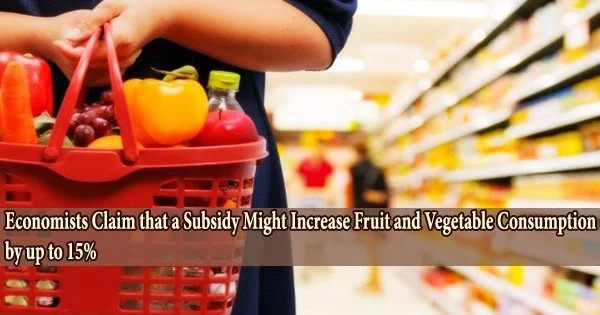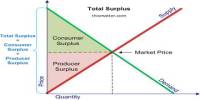In contrast to unhealthy alternatives, which trade close to marginal cost, fresh fruit and vegetables have high fixed costs, which means they cost 40% more than would be efficient.
According to the study, introducing a subsidy to offset price distortion and lower the cost of fruits and vegetables will alter diets in a way that is not only healthier but also more consistent with what consumers prefer to eat.
The study by economists at the University of Warwick, which was published today (30 March, 2022) in Science Advances, aimed to quantify pricing distortions of fruits and vegetables caused by market flaws and their effect on our diets.
The economists discovered that the supply chain’s fixed expenses affect the cost of fruit and vegetables substantially more than they do the cost of other commodities, distorting the relative pricing by at least 40%.
According to these high pricing, customers likely purchase 15% fewer fruits and vegetables than they otherwise would have if these items were sold at marginal cost. This underconsumption is the result of a flaw in the market: fixed costs make it impossible for the “invisible hand” of the market to distribute more fruits and vegetables to consumers, which would be better for both them and the product’s producers.
A third of the difference between the average amounts of fruit and vegetables consumed and the recommended intake is related to the 15% underconsumption of fruits and vegetables caused by flaws in the retail sector.
One of the article’s authors, Professor Thijs van Rens, is also the director of the Warwick Obesity Network, which produces evidence-based policy and practitioner briefs in support of a national obesity strategy.
Taxing and subsidising to tackle obesity has been politically infeasible for some time but shouldn’t be any longer. Obesity is a massive public health problem and we’re not going to solve it with tweaks. We need to bring out the big guns: subsidies and taxes. A subsidy is in some ways the most market-based, least invasive intervention you can think of. Anything less than that is just giving friendly advice and will not get us where we need to be.
Professor Thijs van Rens
He said: “The food retail market is very competitive, so if there weren’t any fixed costs you would expect food to be sold close to marginal cost. And the fact that they are not affects diets.”
“A higher price of any product means that people buy less of it. The question is, by how much? We find that if the market were working correctly, consumers would buy 15% more fruit and vegetables than they currently do, which would constitute a huge gain for public health.”
“There is something wrong with the market, which is that there’s a high fixed cost in the provision of fruits and vegetables. The effect of that is that the prices are too high, and consumption too low. What is worse: the effect is stronger when demand is low. And demand happens to be low where people are poor. So this market failure not only makes us all unhealthier, but it increases health inequality as well.”
A product’s shelf price includes fixed expenses related to its production and distribution. Since they must be replenished more frequently due to their perishability, fruit and vegetables have particularly high fixed costs. As a result, fresh produce costs more than other, less healthy foods, which are typically marketed at or near their marginal cost.
To study the impact this has on consumers’ fruit and vegetable purchase, the economists modelled the consumption behaviour of households with varied incomes, residing in neighbourhoods with different average income levels.
They used information on food purchases in the US from the NielsenIQ Homescan dataset, which includes specifics on the amounts and costs of food purchases made between 2004 and 2014 by roughly 60,000 households, to ascertain how much of a consumer’s cost of purchasing fruit and vegetables is determined by their preferences for the types and quantities of these items, and how much is determined by these fixed costs.
The economists propose for a subsidy for fruits and vegetables of up to 25% in order to boost consumption and improve the nutritional quality of our diets. According to estimates, UK supermarkets sold about £10.4 billion worth of fresh produce in 2017, meaning that the government would need to spend £2.5 billion year to support the subsidy.
The total cost of obesity to society as a whole is estimated at £27 billion, with the NHS spending an anticipated £6.1 billion on overweight and obesity-related illnesses in 2014–15 and potentially £9.7 billion by 2050.
Professor Van Rens adds: “Taxing and subsidising to tackle obesity has been politically infeasible for some time but shouldn’t be any longer. Obesity is a massive public health problem and we’re not going to solve it with tweaks. We need to bring out the big guns: subsidies and taxes. A subsidy is in some ways the most market-based, least invasive intervention you can think of. Anything less than that is just giving friendly advice and will not get us where we need to be.”
“There is no debate that fruit and vegetable consumption would increase if you subsidise it. The main contribution of our research is to show that the market is already so distorted that this subsidy would benefit every single consumer in the economy.”
















